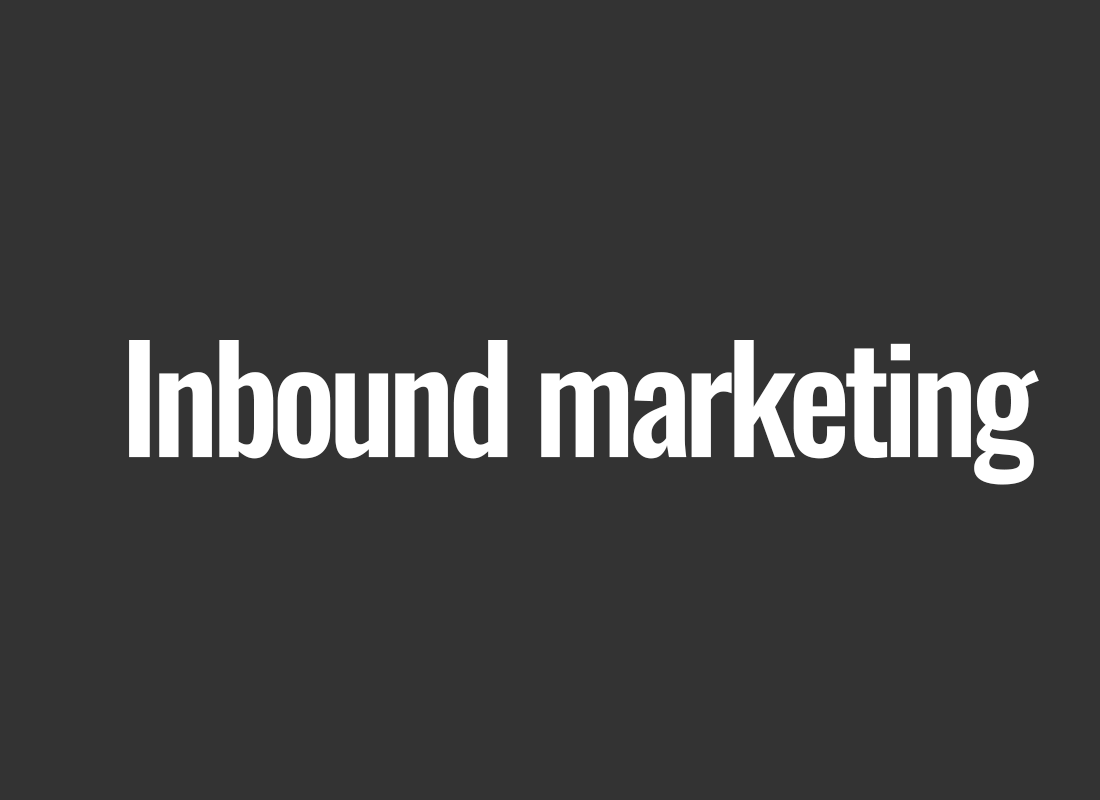Inbound marketing
Inbound marketing is a marketing strategy that reverses the traditional approach to customer acquisition. Instead of using "outbound" methods such as direct advertising or telemarketing, which "reach out" to the customer, inbound marketing focuses on "attracting" customers by creating and sharing valuable content. It is an approach oriented towards building long-term relationships with customers, based on trust and authenticity.
The foundation of inbound marketing is the belief that modern consumers seek information online and make purchasing decisions based on the content they find on the internet. Therefore, a key element of this strategy is creating content that is not only attractive and engaging but most importantly relevant and valuable to the target audience. This content can take various forms, from blog articles, e-books, webinars, instructional videos, to social media posts and newsletters.
Inbound marketing focuses on attracting customers' attention in a natural way, by providing them with content that is interesting and helpful. Unlike traditional methods, which are often perceived as intrusive and aggressive, inbound marketing allows for building organic relationships with customers. As a result, people interested in a brand or product find it themselves, often through search engines, social media, or referrals.
Inbound marketing is also a long-term strategy. It's not about quick results, but about gradually building brand awareness, trust, and authority in a given industry. This approach requires patience and consistency, but its effects can be much more lasting and effective than traditional marketing methods. Moreover, due to its nature, inbound marketing is particularly effective in the digital era, where consumers have unlimited access to information and increasingly more control over what they want to watch and how they want to interact with brands.
Key Elements of Effective Inbound Marketing
Inbound marketing utilizes various tools and communication channels to effectively reach potential customers and build lasting relationships with them. Key elements of this strategy include SEO (Search Engine Optimization), content marketing, social media marketing, and marketing automation.
- SEO (Search Engine Optimization). This is the process of optimizing online content to make it easier to find by search engines like Google. By using appropriate keywords, meta tags, and other SEO techniques, websites can achieve a higher position in search results, increasing their visibility and attracting more organic traffic.
- Content Marketing. The heart of inbound marketing, it involves creating and distributing valuable, relevant, and consistent content to attract and engage a specific target audience. This can include blogs, articles, e-books, infographics, videos, podcasts, and other forms of content that provide value to the audience and help solve their problems or satisfy their informational needs.
- Social Media Marketing. Using social media platforms such as Facebook, Instagram, LinkedIn, Twitter to build relationships with current and potential customers. Social media allows brands not only to promote their content but also to engage in direct interactions with the audience, build a community around the brand, and listen to customer feedback.
- Marketing Automation. Involves using software to automate repetitive marketing tasks. These tools help in managing marketing campaigns, segmenting audiences, personalizing communication, and tracking the effectiveness of marketing activities. Marketing automation is key in effectively managing leads (potential customers) and converting them into customers.
Inbound marketing focuses on creating experiences that are tailored to the needs and interests of the audience. It is a holistic approach that combines various channels and techniques to create a coherent and thoughtful marketing strategy. Unlike traditional marketing methods, which often rely on interrupting and persuading, inbound marketing is based on attracting customers by delivering value, making it more subtle and effective in building long-term customer relationships.
Summary
As a long-term strategy, inbound marketing requires time and consistency in action, but its benefits are multi-dimensional. Above all, it allows for building deep and lasting relationships with customers who choose to interact with the brand themselves. This approach, based on trust and delivering value, translates into higher customer loyalty and often a greater lifetime value of the customer. Additionally, inbound marketing is highly measurable, allowing marketers to precisely track the effectiveness of their actions and continuously optimize their strategy. Data analysis and feedback from customers become a valuable source of knowledge, enabling better tailoring of content and offers to the needs and preferences of the audience.
Another key aspect of inbound marketing is its ability to generate high-quality leads in a cost-effective way. By attracting customers with content that is relevant and useful to them, brands can increase their visibility and authority in the industry. As a result, inbound marketing not only contributes to an increase in organic traffic to the website but also enables better sales results at lower customer acquisition costs. In the digital age, where competition for user attention is immense, inbound marketing becomes a key element of marketing strategies, allowing for effective market differentiation and building lasting brand value.




